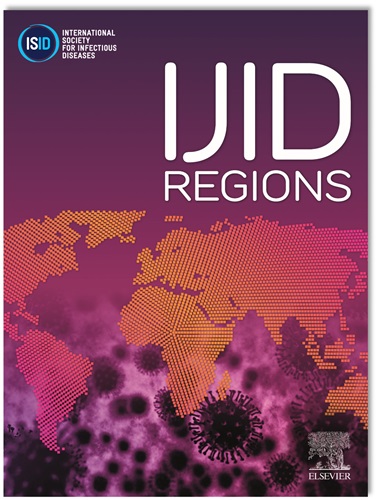Respiratory syncytial virus hospitalisation burden in children below 18 years in six European countries (2016-2023) pre- and post-COVID-19 pandemic
IF 4.3
2区 医学
Q1 INFECTIOUS DISEASES
引用次数: 0
Abstract
Objectives
Respiratory syncytial virus (RSV) is a substantial cause of hospital admission in young children and leads to seasonal pressure on pediatric emergency units in most countries. This study aims to assemble national or large-scale data on RSV hospitalisations from six European countries with a standardised approach to provide recent burden data for all children and assess changes since SARS-CoV-2’s emergence.
Methods
We analysed 2016-2023 hospital records from national registries in Denmark, England, Finland, The Netherlands, and Scotland, and from a hospital surveillance network in Spain-Valencia for children below 18 years. We considered separately RSV-coded and RSV laboratory-confirmed cases, comparing them to respiratory tract infections. We studied the temporal evolution of incidence rates and case reporting practices, comparing pre- and post-COVID-19 periods.
Results
Post-COVID-19 observed RSV hospital burden was similar to the pre-COVID-19 one for younger children but higher for the 1-2 years, 3-4 years, and 5-17 years age groups. No change in terms of coding—neither diagnosis nor RSV-coding when RSV was laboratory-confirmed—was detected.
Conclusions
Hospital RSV burden in children is significant but currently not fully monitorable. Further efforts to harmonise coding practices both within and across countries would improve the quality of future analyses. Additional data in future seasons should complement current outcomes to inform decisions regarding RSV prevention.
在covid -19大流行之前和之后,六个欧洲国家(2016-2023年)18岁以下儿童的呼吸道合胞病毒住院负担
目的呼吸道合胞病毒(RSV)是幼儿住院的一个重要原因,并在大多数国家给儿科急诊部门带来季节性压力。本研究旨在通过标准化方法收集来自六个欧洲国家的RSV住院的国家或大规模数据,以提供所有儿童的近期负担数据,并评估自SARS-CoV-2出现以来的变化。方法:我们分析了2016-2023年丹麦、英格兰、芬兰、荷兰和苏格兰国家登记处的医院记录,以及西班牙-瓦伦西亚的医院监测网络中18岁以下儿童的记录。我们分别考虑RSV编码病例和RSV实验室确诊病例,并将其与呼吸道感染进行比较。我们研究了发病率和病例报告实践的时间演变,比较了covid -19之前和之后的时期。结果低龄儿童感染后RSV住院负担与感染前相似,但1-2岁、3-4岁和5-17岁年龄组RSV住院负担较高。在编码方面没有发现变化——当实验室确认RSV时,既没有诊断也没有RSV编码。结论儿童医院呼吸道合胞病毒负担显著,但目前尚不能完全监测。进一步努力协调各国内部和各国之间的编码实践,将提高未来分析的质量。未来季节的其他数据应补充当前结果,为有关RSV预防的决策提供信息。
本文章由计算机程序翻译,如有差异,请以英文原文为准。
求助全文
约1分钟内获得全文
求助全文
来源期刊
CiteScore
18.90
自引率
2.40%
发文量
1020
审稿时长
30 days
期刊介绍:
International Journal of Infectious Diseases (IJID)
Publisher: International Society for Infectious Diseases
Publication Frequency: Monthly
Type: Peer-reviewed, Open Access
Scope:
Publishes original clinical and laboratory-based research.
Reports clinical trials, reviews, and some case reports.
Focuses on epidemiology, clinical diagnosis, treatment, and control of infectious diseases.
Emphasizes diseases common in under-resourced countries.

 求助内容:
求助内容: 应助结果提醒方式:
应助结果提醒方式:


